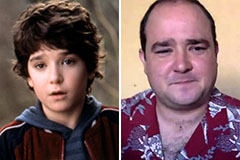Were you trying to find related information on Why Do My Plumbing Pipes Make A Knocking Noise?

To identify loud plumbing, it is very important to identify very first whether the undesirable noises take place on the system's inlet side-in various other words, when water is turned on-or on the drain side. Sounds on the inlet side have varied reasons: too much water stress, worn shutoff and tap components, improperly linked pumps or various other appliances, inaccurately put pipe fasteners, and also plumbing runs having way too many limited bends or various other constraints. Sounds on the drain side generally stem from bad area or, as with some inlet side sound, a format consisting of tight bends.
Hissing
Hissing sound that takes place when a faucet is opened somewhat normally signals too much water stress. Consult your local water company if you think this trouble; it will be able to tell you the water stress in your area and also can mount a pressurereducing shutoff on the inbound supply of water pipeline if essential.
Thudding
Thudding noise, commonly accompanied by trembling pipes, when a faucet or appliance shutoff is turned off is a problem called water hammer. The sound as well as resonance are triggered by the reverberating wave of pressure in the water, which suddenly has no location to go. Sometimes opening a shutoff that discharges water quickly into an area of piping consisting of a limitation, joint, or tee installation can generate the very same problem.
Water hammer can typically be healed by setting up installations called air chambers or shock absorbers in the plumbing to which the trouble shutoffs or faucets are linked. These devices enable the shock wave developed by the halted flow of water to dissipate in the air they have, which (unlike water) is compressible.
Older plumbing systems may have brief vertical sections of capped pipeline behind wall surfaces on tap competes the same objective; these can eventually fill with water, minimizing or damaging their efficiency. The treatment is to drain the water system totally by turning off the primary supply of water shutoff and opening up all taps. After that open the major supply shutoff and also close the taps one by one, beginning with the tap nearest the shutoff and finishing with the one farthest away.
Babbling or Screeching
Extreme chattering or shrieking that occurs when a shutoff or tap is turned on, and that generally disappears when the fitting is opened totally, signals loose or defective interior parts. The remedy is to change the shutoff or tap with a brand-new one.
Pumps and devices such as washing devices and dishwashing machines can move motor noise to pipelines if they are incorrectly linked. Connect such items to plumbing with plastic or rubber hoses-never inflexible pipe-to isolate them.
Various Other Inlet Side Noises
Creaking, squeaking, scraping, breaking, as well as tapping generally are caused by the expansion or contraction of pipes, usually copper ones providing hot water. The noises occur as the pipes slide versus loosened fasteners or strike nearby home framing. You can frequently determine the area of the trouble if the pipes are revealed; just comply with the audio when the pipelines are making noise. Most likely you will find a loosened pipeline hanger or an area where pipelines lie so near to floor joists or other framing items that they clatter against them. Affixing foam pipe insulation around the pipelines at the point of call should remedy the trouble. Make sure straps and also wall mounts are protected as well as supply sufficient assistance. Where feasible, pipeline fasteners need to be affixed to large architectural components such as structure wall surfaces instead of to mounting; doing so decreases the transmission of resonances from plumbing to surface areas that can amplify and also move them. If attaching fasteners to framing is inescapable, wrap pipelines with insulation or various other durable product where they contact bolts, as well as sandwich completions of new bolts in between rubber washers when installing them.
Correcting plumbing runs that struggle with flow-restricting limited or various bends is a last resource that ought to be undertaken just after consulting a knowledgeable plumbing professional. Sadly, this situation is rather typical in older houses that might not have actually been constructed with interior plumbing or that have seen a number of remodels, especially by amateurs.
Drain Sound
On the drain side of plumbing, the chief objectives are to remove surface areas that can be struck by falling or rushing water and to insulate pipelines to include inevitable noises.
In new construction, tubs, shower stalls, toilets, and wallmounted sinks and containers ought to be set on or against resilient underlayments to reduce the transmission of noise with them. Water-saving toilets and also taps are less loud than conventional designs; install them rather than older types even if codes in your location still permit using older fixtures.
Drainpipes that do not run up and down to the cellar or that branch into horizontal pipeline runs sustained at floor joists or other mounting existing particularly frustrating noise issues. Such pipes are large enough to radiate substantial vibration; they likewise bring substantial quantities of water, that makes the situation worse. In brand-new building, define cast-iron soil pipelines (the large pipelines that drain commodes) if you can afford them. Their enormity contains a lot of the noise made by water going through them. Also, avoid directing drains in wall surfaces shown to bed rooms and also areas where individuals gather. Wall surfaces consisting of drains must be soundproofed as was explained earlier, using dual panels of sound-insulating fiberboard and also wallboard. Pipelines themselves can be wrapped with special fiberglass insulation produced the objective; such pipelines have a resistant vinyl skin (often containing lead). Results are not always sufficient.
If Your Plumbing is Making These Sounds, There’s a Problem
A Bang or Thump When You Turn Off a Faucet
If a loud bang or thump greets you each time your turn off running water, you likely have a water hammer. A water hammer occurs when the water velocity is brought to a halt, sending a shock wave through the pipe. It can be pretty jarring — even worse, damaging to your plumbing system. All that thudding could loosen connections.
Strange Toilet Noises
You’re so familiar with the sounds your toilet makes that your ears will be attuned to anything out of the ordinary. Fortunately, most unusual toilet noises can be narrowed down to just one of several problems.
Foghorn sound:
Open the toilet tank Flush the toilet When you hear the foghorn noise, lift the float to the top of the tank If you’re ambitious, you can remove the ballcock valve and disassemble it to replace the washer. Or you can more easily replace the ballcock valve entirely. This device is relatively inexpensive and available at most any hardware store.
Persistent hissing:
The hissing following a flush is the sound of the tank filling. It should stop once the tank is full. But if the hissing continues, it’s likely because water is leaking out of the tank. The rubber flap at the bottom of the tank can degrade, letting water slip through and into the bowl. That’s why the tank is refilling continuously. Fortunately, this is an easy fix:
Cut the water to the toilet by closing the shutoff valve on the water supply line. Flush the toilet to drain the tank. Disconnect the flapper Attach the new flapper Gurgling or bubbling:
Gurgling or bubbling suggests negative air pressure in the drain line, likely resulting from a clog. As air releases, it causes the water in the toilet to bubble. This could either be a minor issue or a major one, depending on the clog’s severity. Clogs can be caused by toilet paper or more stubborn obstructions such as tree roots. If you can’t work out the clog with a plunger, contact a professional plumber for assistance because a clog of this magnitude could lead to filthy and unsanitary sewage backups in your sink bathtub.

As a serious person who reads about Why is My Home Making Strange Plumbing Noises, I think sharing that excerpt was beneficial. Are you aware of another individual who is occupied with the topic? Take a moment to promote it. Thank you for going through it.
Plumbing woes? Connect.
 Emilio Estevez Then & Now!
Emilio Estevez Then & Now! Bradley Pierce Then & Now!
Bradley Pierce Then & Now! Raquel Welch Then & Now!
Raquel Welch Then & Now! Barbara Eden Then & Now!
Barbara Eden Then & Now! Naomi Grossman Then & Now!
Naomi Grossman Then & Now!